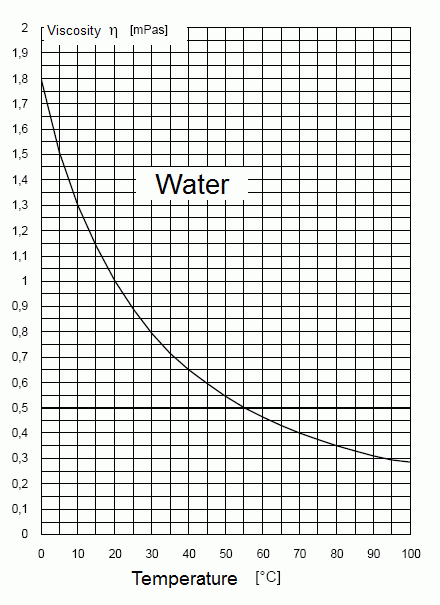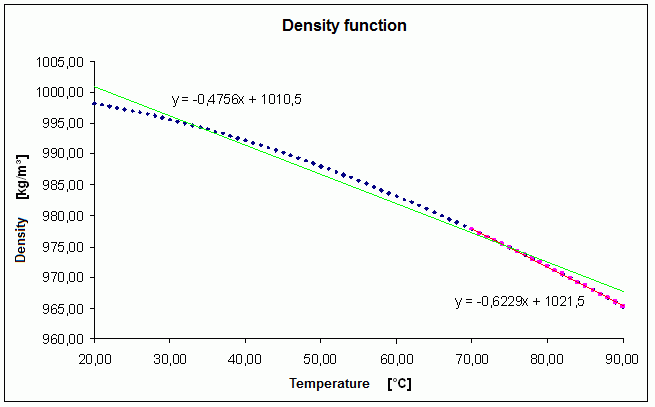Viscosity
Viscosity is a property that is due to the inner friction of the fluid. The unit of the viscosity is [kg/m s)] or Pascal-second [Pa s].
The dynamic fluid viscosity η [kg/(m s)] and, with a large temperature gradient, the density ρ [kg/m³] are temperature-dependent variables. Their change due to the temperature has the consequence that the differential equations (the transient flow and the energy transport equation) represent a coupled differential equation system.
An experimental formula for describing the relationship between dynamic fluid viscosity and temperature is used in the calculation:


Dynamic viscosity η of water dependent on the temperature at a density of ρ= 1000.0 [kg/m³]
The unit millipascal second [mPa s] corresponds to the unit 1000*[kg/(m s)].
The following relationship applies for dynamic and kinematic viscosity:
dynamic viscosity: η = μ * ρ [kg/(m s)]
kinematic viscosity: μ = η / ρ [m²/s]
Temperature-dependent density
The linear dependency of the density [kg/m3] from the temperature T [°C] is considered in SPRING:

With:
ρ(T) = temperature dependent density [kg/m³]
ρ0 = density of the reference temperature T0 in [kg/m³], default is ρ0 = 1000.0 [kg/m³]:

T0 = Reference temperature [°C], default is T0 = 20°C
α = constant density gradient, default is α = 0.0
The following figure shows the dependency of the density from the temperature:

Temperature-dependent density function
In this case is:
ρ0 = ρ(T0=20 °C) = 1010,5 [kg/m³]
The density function is approximated by a linear equation (green line) in the considered temperature interval (here: about 32 – 75 °C), by this the density gradient α is defined.
Here, the density gradient α = constant = -0.4756. (This corresponds to the slope (= 1st derivative) of the line): 
If the initial or computed temperatures lie at a different temperature range, another fit line is to be defined (red line).

 Realization in SPRING
Realization in SPRING